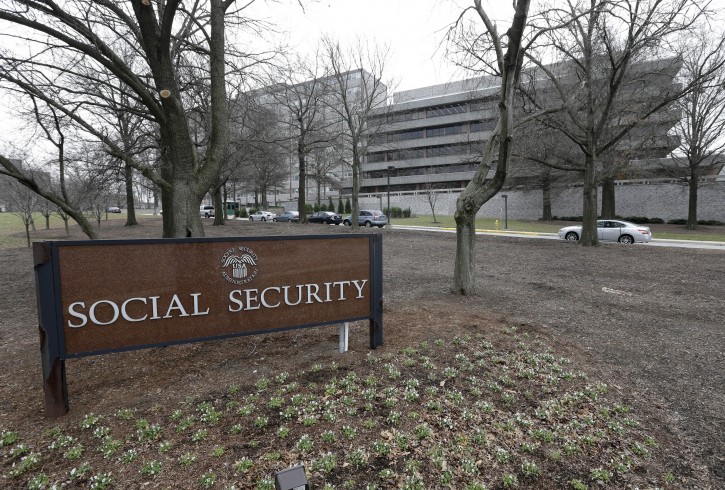 Washington – Millions of Social Security recipients and federal retirees will get a 0.3 percent increase in monthly benefits next year, the fifth year in a row that older Americans will have to settle for historically low raises. The adjustment adds up to a monthly increase of less than $4 a month for an average recipient.
Washington – Millions of Social Security recipients and federal retirees will get a 0.3 percent increase in monthly benefits next year, the fifth year in a row that older Americans will have to settle for historically low raises. The adjustment adds up to a monthly increase of less than $4 a month for an average recipient.
Subscribe to our Daily Roundup Email
The cost-of-living adjustment, announced by the government Tuesday, will affect more than 70 million people — about 1 in 5 Americans. For recipients, the average monthly Social Security payment now is $1,238.
Unfortunately for some seniors, even the small increase will probably be wiped out by an expected increase in Medicare Part B premiums, which are usually deducted from Social Security payments.
By law, rising premiums for most Medicare recipients cannot exceed their Social Security cost-of-living increase. That’s known as the “hold harmless” provision. However, new enrollees and high-income retirees are not covered by that provision, so they could face higher Medicare premiums, which will be announced later this year.
There was no Social Security benefit increase this year, and next year’s will be small because inflation is low, driven in part by cheaper fuel prices. The low inflation rate should help keep some older folks’ bills from rising very rapidly.
Don’t tell that to Millicent Graves, a retired veterinary technician, who says Medicare and supplemental insurance premiums eat up nearly a third of her $929 monthly Social Security payment. The 72-year-old from Williamsburg, Virginia, says her insurance premiums went up by $46.50 this year, and her cable TV, internet and phone bill went up, too.
“I just lose and lose and lose and lose,” Graves said.
More than 60 million retirees, disabled workers, spouses and children get Social Security benefits. The COLA also affects benefits for about 4 million disabled veterans, 2.5 million federal retirees and their survivors, and more than 8 million people who get Supplemental Security Income, the disability program for the poor. Many people who get SSI also receive Social Security.
Since 2008, the COLA has been above 2 percent only once, in 2011. It’s been zero three times.
“This loss of anticipated retirement income compounds every year, causing people to spend through retirement savings far more quickly than planned,” said Mary Johnson of the Senior Citizens League. “Over the course of a 25- or 30-year retirement, it reduces anticipated Social Security income by tens of thousands of dollars.”
The cost-of-living adjustment is based on a broad measure of prices generated by the Bureau of Labor Statistics. It measures price changes for food, housing, clothing, transportation, energy, medical care, recreation and education.
If prices go up, benefits go up. If prices drop or stay flat, benefits stay the same.
Gasoline prices have fallen by more than 6 percent over the past year, according to the September inflation report, while the cost of medical care has gone up by more than 5 percent.
For seniors who don’t drive much, they don’t get the full benefit of low gas prices, said Max Gulker, a senior research fellow at the American Institute for Economic Research. Many seniors spend more of their income on health care.
Graves said she appreciates lower gas prices, but the higher medical costs are a problem.
“I just have to rely more each month on cashing in investments,” Graves said. “I’m lucky I can do that.”
Democratic presidential nominee Hillary Clinton has embraced the idea of expanded benefits for certain low-income retirees. She says the nation would pay for it by raising taxes on “the highest-income Americans.”
Breaking with other Republicans, GOP nominee Donald Trump has pledged not to cut benefits. However, he has offered few specifics on how he would address Social Security’s long-term financial problems.
Social Security is financed by a 12.4 percent tax on the first $118,500 of a person’s annual wages, with the worker paying half and the employer paying the other half. The amount of wages subject to the payroll tax will go up to $127,200 next year, the Social Security Administration said.
About 173 million workers will pay Social Security taxes next year — about 12 million of them will face higher taxes because of the higher cap, the agency said.

The system has to tax all income, not with a cap .My check today doesn’t even cover my health ins. bill.
The new refugees that come here get full benefits and section 8 plus ,plus ,while our citizens get crumbs.
They keep on saying entitlement to social security, I hate to tell people I have had to pay into the system since I was 17years old and they almost took half my salary and they have a nerve to call it an entitlement. The new comers never paid a dime into the system and they get all included, I call it charity to these people or welfare but why use Social Security for there are more systems to use then this one.